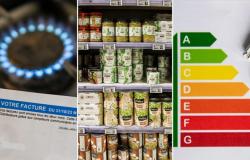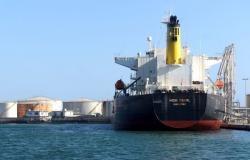For Ole Hansen of Saxo Bank, demand for gold remains supported by central banks and the Chinese middle class. As for industrial metals, the supply is not very flexible.
The evolution of material prices varies greatly from one asset to another. What should we expect for gold, oil and the prices of certain raw materials such as copper which have soared recently? Update with Ole Hansen, commodities expert at Saxo Bank.
Since the start of 2024, we have observed a sharp increase in the prices of many raw materials, whether gold, metals such as copper or even agricultural commodities such as orange juice. Are these price increases justified by fundamental factors or are they rather the result of speculative market movements?
Unlike the evolution of the prices of other asset classes, such as stocks for example, which can be more influenced by the expectations of market participants concerning their future potential, the prices of raw materials always end by fairly quickly returning to a level which corresponds to the balance between supply and demand. If, following an increase in the prices of a given raw material, there is an excessive supply compared to demand, prices end up falling again. Over time, the market never lies with raw materials!
“Many investors today buy gold to protect themselves in case things go wrong – just as they pay an insurance premium to protect themselves against certain risks.”
Are there not, however, situations where prices are kept at artificially high levels due to fears of future shortages, without this really being justified by insufficient supply of a raw material?
This can happen but only for a limited period of time. If we take the example of gas prices in Europe during autumn 2022 and winter 2023, there was certainly a spectacular increase in prices due to fears of supply shortages following the outbreak of war in Ukraine. However, a few months later, gas prices quickly fell back to their pre-war levels. If there is no increase in demand and there is sufficient supply, prices most often return quickly to their equilibrium levels.
Is this also valid for the evolution of the price of gold (+13% since January), which is both a commodity but which also serves as a safe haven for many investors?
Some people believe that the rise in gold prices during the first quarter of 2024 was primarily due to demand from financial investors. However, there has instead been a decrease in volumes invested in gold via ETFs. Therefore, if financial investors had been behind the rise in gold prices, they would have instead increased their positions in gold in the form of ETFs. However, this was not the case.
What then supported the demand for gold?
I would mention three factors. First, following the war in Ukraine, sanctions imposed on Russia on amounts held in dollars and other foreign currencies prompted some central banks to increase their gold holdings. Central banks have been among the major buyers of gold in recent quarters.
Second, China’s real estate sector continues to experience significant difficulties. Many individual investors who previously placed a large part of their savings in real estate have switched to gold. China’s middle class is among the important buyers of gold. Third, there is a climate of concern regarding the evolution of debt in many countries. Faced with these fears, some investors are turning to gold. For every additional point of debt relative to GDP, that quickly adds up to billions more to be added to debt service. The rise in Treasury bond yields in the United States is a factor that is positively correlated with the movement in the price of gold. Many investors today buy gold to protect themselves in case things go wrong – just as they pay an insurance premium to protect themselves against certain risks.
“Opening new mines can take several years, sometimes more than ten years for industrial metals.”
What is your analysis of oil prices which ultimately seem to react little to geopolitical tensions, particularly in the Middle East?
The market assumes that the main players in this market have no interest in things getting worse. Saudi Arabia has no interest in an escalation of tensions in the region, nor does Qatar, which also has some influence over Iran. Markets are assuming that Iran will not seek to block the Strait of Hormuz. So, overall, there are important factors that work against an oil supply disruption scenario right now. As for China, it is the largest buyer of Iranian oil, and at a discount price. The Middle Kingdom therefore also has an interest in limiting tensions in the region.
Another subject very often debated in recent years: that of rare metals, necessary to equip electronic devices, as well as the demand for industrial metals more broadly. How do you observe the evolution of the prices, sometimes spectacular, of certain metals recently, for example copper, the price of which has jumped by around a quarter since January?
The extent of price changes of course varies from metal to metal. Generally speaking, we observe that supply can only increase slowly but that demand sometimes increases very quickly due to the needs of the industry. However, opening new mines – or even simply bringing certain existing mines back into operation – can take several years, sometimes more than ten years. The rise in prices of certain minerals also reflects this difficulty in quickly adapting supply according to changes in demand. The increase in copper prices also corresponds to such a situation.
“There are important factors that work against an oil supply disruption scenario at this time.”
Furthermore, given the needs linked to the energy transition or due to the explosion of equipment necessary to operate certain data centers in relation to AI developments, we can, generally speaking, expect an increase in demand for many industrial metals in the coming years.
Conversely, lithium prices have rather fallen since 2023, after a phase of sharp increase until 2022. How can we explain this downward trend, going against the trend of the rest of the market?
For lithium prices, this is a situation that has prevailed recently: it initially took a long time and significant investments to start the exploitation of certain mines. Mines were thus reopened, which made it possible to increase the supply of lithium. For its part, demand for lithium was also sustained but it did not explode as much as some market players anticipated, in particular due to lower than expected sales of electric vehicles in China, which ultimately led to a decline in lithium prices.






